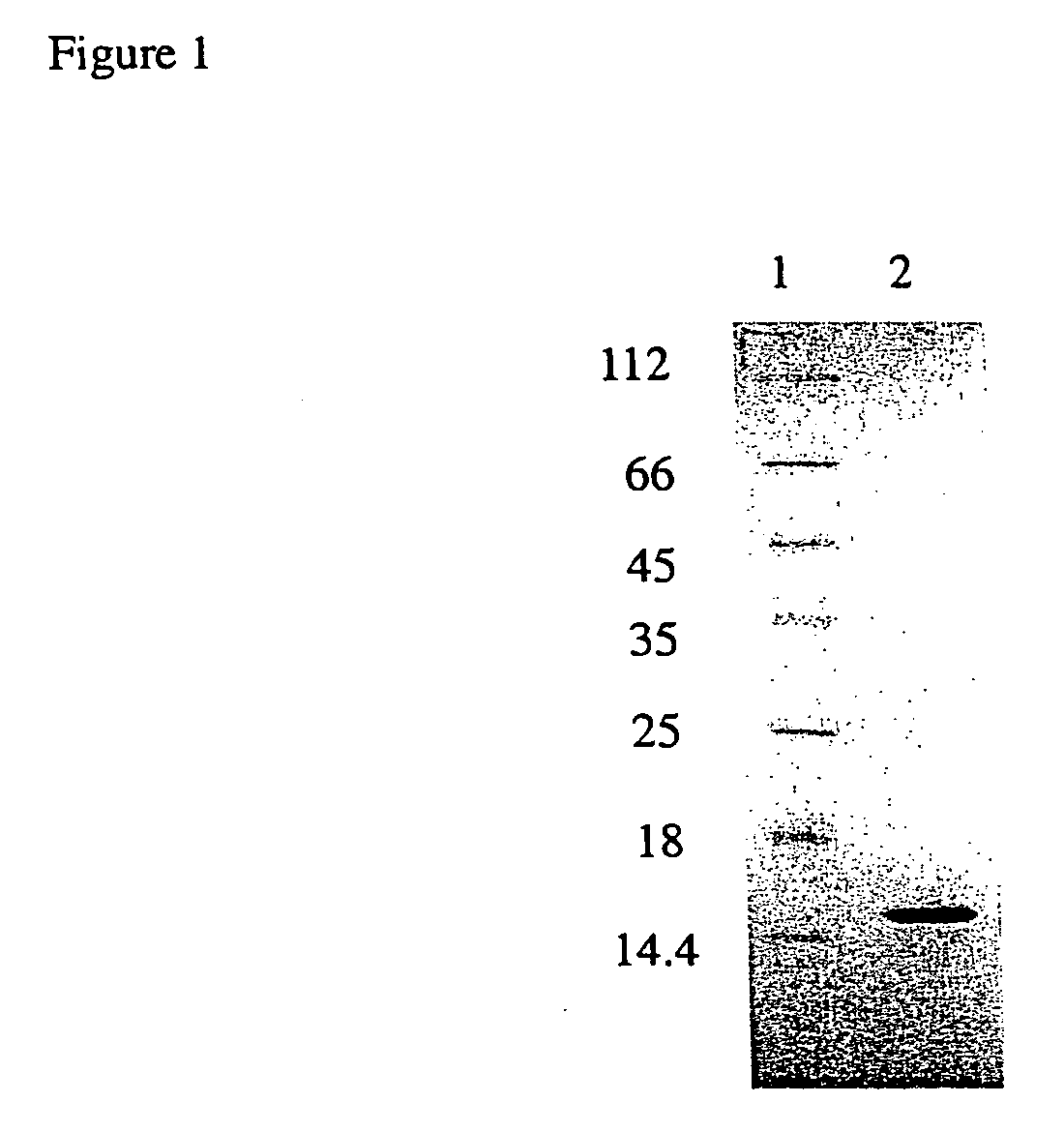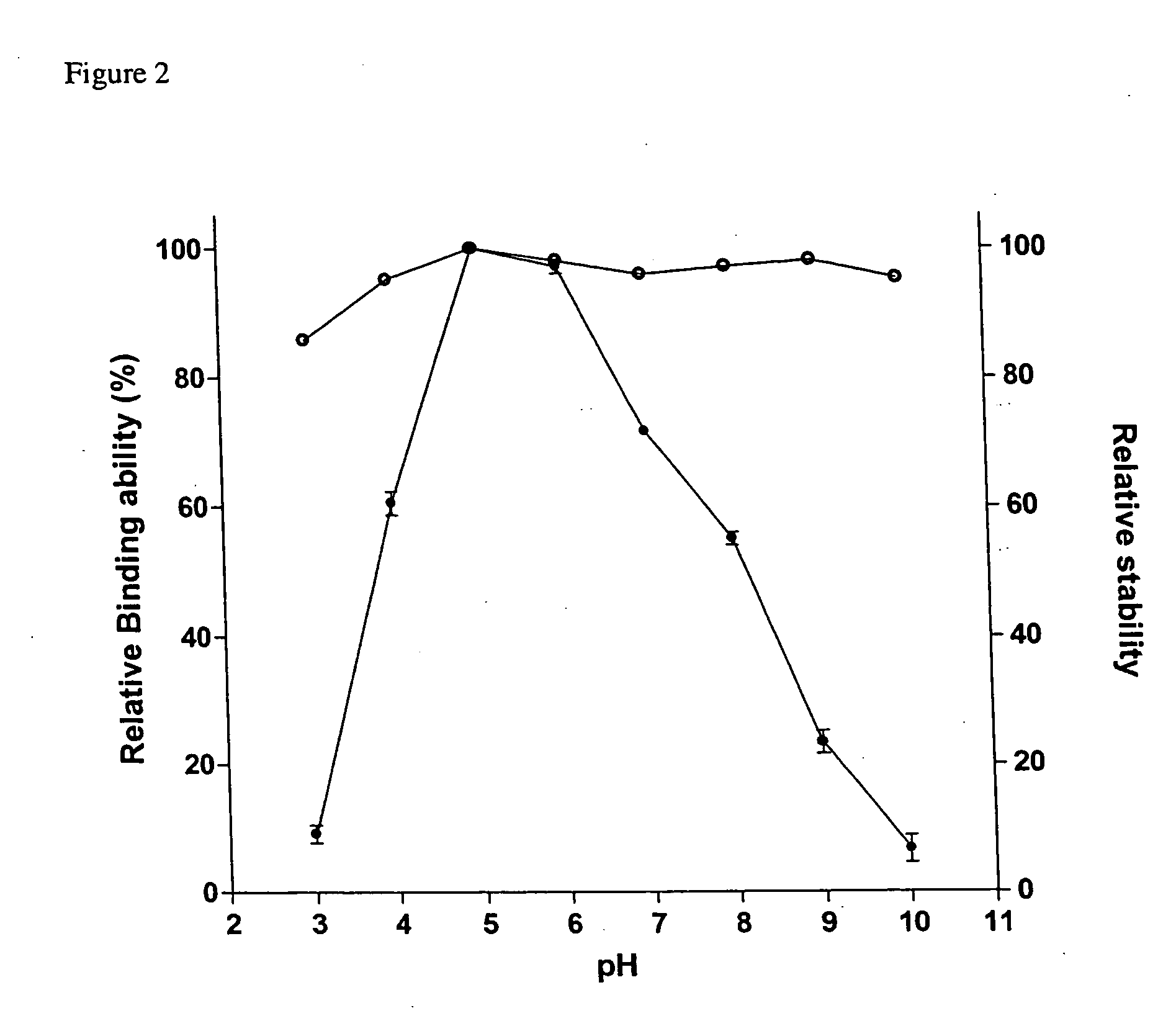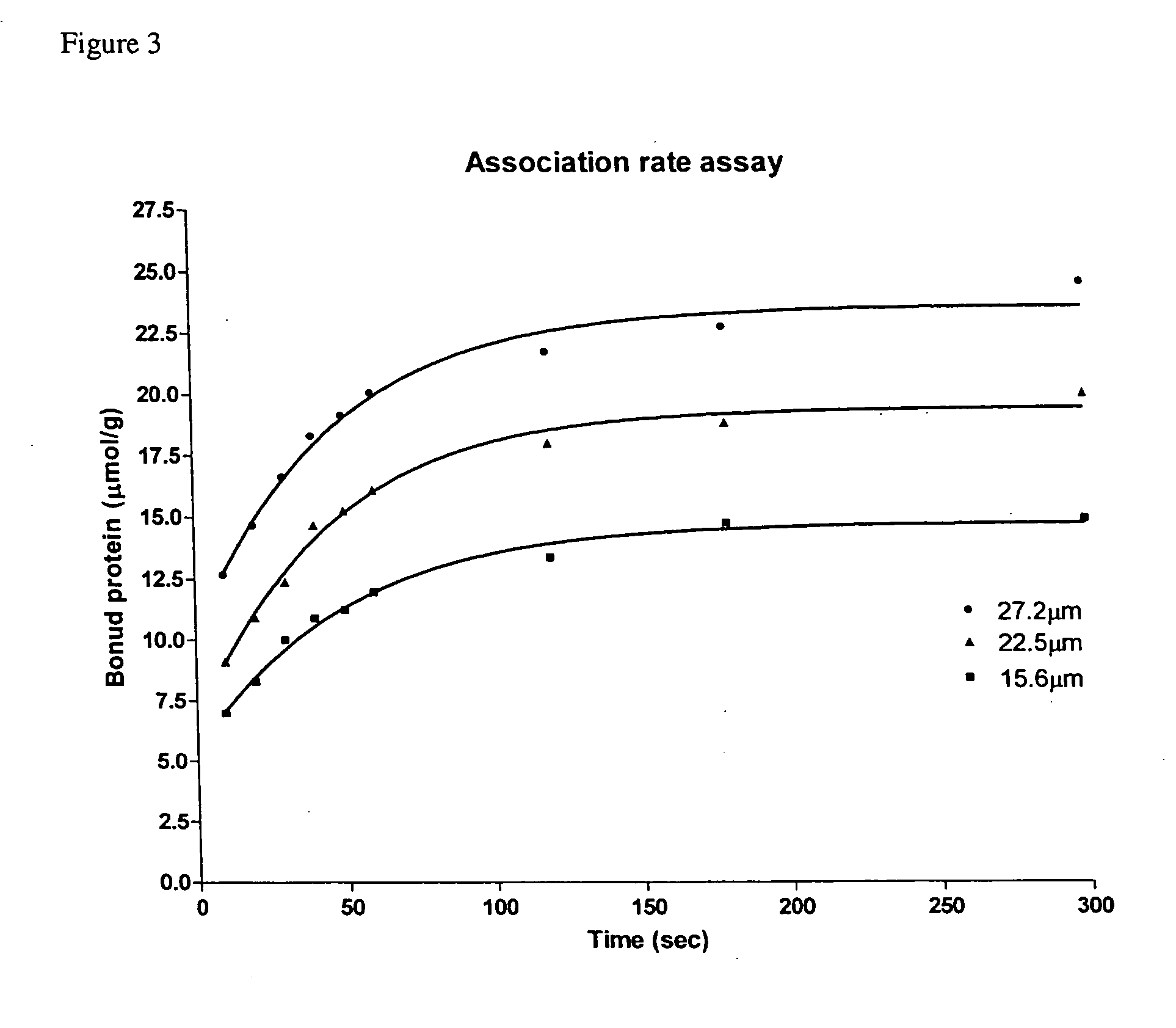Recombinant protein comprising starch binding domain and use thereof
a technology of starch binding domain and recombinant protein, which is applied in the field of the starch binding domain (sbd) of glucoamylase, can solve the problems of inconvenient purification process, high cost of purification columns, and laborious purification processes
- Summary
- Abstract
- Description
- Claims
- Application Information
AI Technical Summary
Benefits of technology
Problems solved by technology
Method used
Image
Examples
example 1
[0032] (A) Construction of SBD-6H
[0033] The gene encoding glucoamylase SBD from residues 26-131 was amplified by polymerase chain reaction (PCR) using the forward primer 5′-CATATGGCAAGTATTCCTAGCAGT-3′ and the reverse primer 5′-CTCGAGTGTAGATACTTGGT-3′ (restriction sites, shown in bold, were incorporated into the two primers). The PCR product was cloned into the pGEM-T Easy cloning vector (Promaga) and verified by DNA sequencing. The sbd gene fragment was subsequently ligated into pET23a(+) expression vector (Novagen) at NdeI and XhoI sites to generate pET-SBD. SBD-6H encoded by pET-SBD contains a C-terminal His6 tag. The construct was transformed into competent Escherichia coli BL21-Gold (DE3) (Novagen) for protein expression.
[0034] (B) Expression and Purification of SBD-6H
[0035] BL21-Gold (DE3) cells transformed with pET-SBD were grown in LB medium containing 100 μg / ml ampicillin at 37° C. until the OD600 reached 0.6. The temperature was then reduced to 20° C., and isopropyl β-D-...
example 2
[0037] Effect of pH on Binding Ability and Stability
[0038] For the measurement of binding ability, SBD-6H and granular corn starch were incubated in buffers with varied pH values for 1 h as described in the starch binding assay. The stability was measured by keeping SBD-6H at 25° C. for 30 min in different buffers including glycine / HCl (pH 3), sodium acetate / acetic acid (pH 4-5), Na2HPO4 / NaH2PO4 (pH 6-7), Tris / HCl (pH 8) and glycine / NaOH (pH 9-10). The remaining binding ability was measured at 25° C. for 1 h in sodium acetate buffer (50 mM, pH 5.5). The relative binding ability of SBD-6H assayed at pH 5 was normalized as 100%.
[0039] The stability of SBD-6H was analyzed in the pH range from 3 to 10 and it indicated that the SBD-6H was stable in a wide pH range, even at the extreme acidic and alkaline conditions (FIG. 2). The binding assays were used to identify the optimal pH range of SBD-6H on adsorption of insoluble starch. As shown in FIG. 2, the pH range for maximal SBD-6H bind...
example 3
[0041] Association Rate of SBD-6H to Insoluble Starch
[0042] The purified SBD-6H in the concentration range from 15.6 to 27.2 μM was added to 1 mg / ml of pre-washed granular corn starch and incubated at 25° C. with gentle stir for 5 h. The binding was terminated at different time intervals by sedimentation of the starch. After centrifugation at 16,000 g for 10 min at 4° C., the protein concentration of the supernatant (unbound protein) was determined by the BCA assay, and the amount of bound protein was calculated from the difference between the initial and unbound protein concentrations. The bound protein at equilibrium expressed as micromole of protein per gram of starch was a linear function of the free (unbound) protein in the range of protein concentrations assayed.
[0043] The adsorption kinetics of SBD-6H to granular corn starch was performed at different protein concentrations as shown in FIG. 3. About 50% of the SBD-6H was bound to the insoluble starch during the first 10 min...
PUM
| Property | Measurement | Unit |
|---|---|---|
| dissociation constant | aaaaa | aaaaa |
| temperature | aaaaa | aaaaa |
| pH | aaaaa | aaaaa |
Abstract
Description
Claims
Application Information
 Login to View More
Login to View More - R&D
- Intellectual Property
- Life Sciences
- Materials
- Tech Scout
- Unparalleled Data Quality
- Higher Quality Content
- 60% Fewer Hallucinations
Browse by: Latest US Patents, China's latest patents, Technical Efficacy Thesaurus, Application Domain, Technology Topic, Popular Technical Reports.
© 2025 PatSnap. All rights reserved.Legal|Privacy policy|Modern Slavery Act Transparency Statement|Sitemap|About US| Contact US: help@patsnap.com



